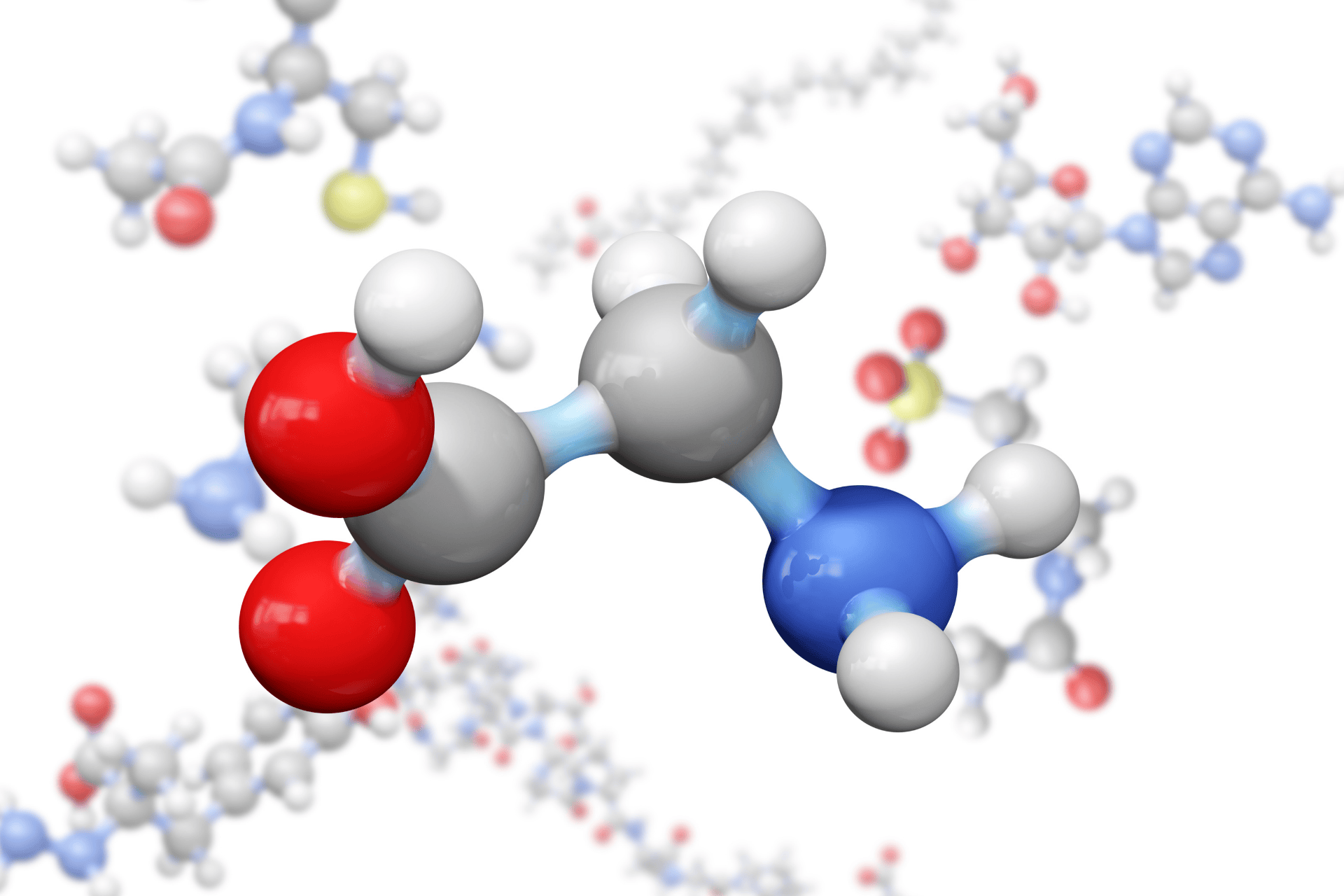Can an AI Doctor Prescribe Antifungal Medication?
Yes, AI doctors can help you get prescription antifungal medications. While the AI itself cannot legally prescribe, AI doctor platforms connect you with licensed physicians [...]
Read MoreTirzepatide is an innovative medication that has gained significant attention in the treatment of type 2 diabetes and obesity. It belongs to a class of drugs known as dual glucose-dependent insulinotropic polypeptide (GIP) and glucagon-like peptide-1 (GLP-1) receptor agonists. By mimicking these hormones, tirzepatide helps regulate blood sugar levels and promotes weight loss, making it a promising option for many patients.
As with any medication, understanding how tirzepatide works and its potential interactions is crucial. One such interaction that has piqued interest is the combination of tirzepatide with glycine, a non-essential amino acid involved in numerous physiological processes, including neurotransmission and metabolic regulation. Exploring this combination could offer insights into enhancing therapeutic outcomes or managing side effects.
Tirzepatide's mechanism of action is particularly fascinating, as it not only stimulates insulin secretion in response to meals but also reduces glucagon levels, which can lead to decreased hepatic glucose production. This dual action is especially beneficial for patients struggling with insulin resistance, a common issue in type 2 diabetes. Furthermore, the weight loss associated with tirzepatide is attributed to its effects on appetite regulation, which can help patients achieve better glycemic control while also addressing obesity, a significant risk factor for various comorbidities.
Clinical trials have shown promising results, with many participants experiencing significant weight loss and improved blood sugar levels. These outcomes have sparked interest in the broader implications of tirzepatide for metabolic health, potentially extending its benefits beyond diabetes and obesity to conditions such as cardiovascular disease and fatty liver disease. As researchers continue to investigate tirzepatide, the hope is to uncover additional therapeutic uses and refine treatment protocols that could further improve patient outcomes and quality of life.
 The Role of Glycine in Health and Its Potential Synergy with Tirzepatide
The Role of Glycine in Health and Its Potential Synergy with TirzepatideGlycine serves multiple functions in the body, from supporting the central nervous system to contributing to the synthesis of proteins and antioxidants. It is also known for its anti-inflammatory and cytoprotective properties because tirzepatide influences metabolic pathways. Incorporating glycine could support its effects or mitigate adverse reactions.
Research into amino acids like glycine suggests that they may improve insulin sensitivity and reduce oxidative stress, factors that are highly relevant to patients managing diabetes. While direct clinical trials combining tirzepatide with glycine are limited, the biochemical rationale supports further investigation into this pairing.
In addition to its metabolic benefits, glycine plays a crucial role in the synthesis of collagen, which is vital for maintaining healthy skin, joints, and connective tissues. This aspect of glycine is particularly important for individuals who may experience joint pain or stiffness, as it can help promote healing and reduce inflammation in these areas. Furthermore, glycine is involved in the production of neurotransmitters, which can enhance mood and cognitive function, making it a valuable addition to any health regimen aimed at improving overall well-being.
Moreover, the potential synergy between glycine and tirzepatide could extend beyond metabolic health. Glycine's role in modulating the immune response may provide additional benefits for patients undergoing treatment with tirzepatide, particularly in managing any inflammatory responses that could arise during therapy. This interplay between glycine's immunomodulatory effects and tirzepatide's metabolic actions could pave the way for innovative treatment strategies that not only target blood sugar levels but also promote holistic health improvements for individuals with diabetes.
Before considering the combination of tirzepatide with glycine, patients should consult healthcare professionals to evaluate safety and efficacy. Self-medicating or adjusting dosages without medical advice can lead to unintended consequences. For those seeking convenient and affordable medical consultations, telehealth services such as Doctronic.ai offer 24/7 access to licensed doctors across all 50 states. This platform provides expert guidance on medication management, including potential supplement interactions.
It is important to note that while glycine is generally regarded as safe, individual responses can vary, especially when combined with potent drugs like tirzepatide. Monitoring for side effects such as gastrointestinal discomfort, hypoglycemia, or allergic reactions is essential. Regular follow-ups with healthcare providers ensure that treatment remains optimal and adjustments are made as needed.
Additionally, understanding the pharmacodynamics of both tirzepatide and glycine can empower patients to make informed decisions. Tirzepatide, a novel medication primarily used for type 2 diabetes management, works by mimicking the action of incretin hormones, which help regulate blood sugar levels. Glycine, an amino acid, plays a role in various metabolic processes and has been studied for its potential benefits in improving insulin sensitivity. When these two compounds are considered together, it is crucial to assess how they may interact at a biochemical level, particularly in relation to glucose metabolism and overall metabolic health.
Furthermore, patients should be aware of the importance of lifestyle factors that can influence the effectiveness of their treatment regimen. A balanced diet, regular physical activity, and adequate hydration can significantly enhance the outcomes of any medication. Engaging in discussions about dietary choices and exercise routines with healthcare providers can lead to a more holistic approach to managing diabetes and overall well-being. By incorporating these elements, patients can not only optimize their medication therapy but also foster a healthier lifestyle that supports their long-term health goals.
The potential benefits of combining tirzepatide with glycine include enhanced blood sugar control and improved metabolic health. Glycine’s role in reducing inflammation and oxidative stress might complement tirzepatide’s effects, possibly leading to better outcomes in weight management and diabetes control.
However, risks must be carefully weighed. Tirzepatide can cause side effects like nausea, vomiting, and diarrhea, and adding supplements without supervision might exacerbate these issues. Additionally, glycine’s impact on neurotransmission means that it could interact with other medications or conditions, underscoring the need for professional oversight.
Managing a treatment plan that involves tirzepatide and glycine requires a personalized approach. Patients should maintain open communication with their healthcare providers, report any new symptoms promptly, and adhere strictly to prescribed dosages. Utilizing telehealth platforms such as Doctronic.ai can facilitate timely consultations and second opinions without the hassle of in-person visits.
Moreover, patients should keep a detailed record of their medication schedules, supplement intake, and any side effects experienced. This documentation helps doctors tailor treatment plans more effectively and ensures that any necessary adjustments are based on accurate information.
 The Future of AI in Personalized Medicine
The Future of AI in Personalized MedicineThe integration of artificial intelligence in healthcare is transforming how patients manage complex treatment regimens like those involving tirzepatide and glycine. AI-powered platforms analyze vast amounts of medical research and patient data to provide personalized recommendations quickly and accurately.
Doctronic.ai exemplifies this revolution by offering an AI doctor that synthesizes the latest peer-reviewed medical knowledge and remembers patient history in detail. This technology enables patients to receive fast, smart, and personalized care, making it easier to navigate new treatment combinations safely and effectively.
Choosing to use tirzepatide with glycine involves understanding the science, recognizing potential benefits and risks, and seeking expert guidance. With the rise of telehealth services like Doctronic.ai, patients have unprecedented access to quality medical advice that fits their schedules and budgets.
By staying informed and proactive, individuals can optimize their treatment outcomes and improve their overall health. Whether managing diabetes, obesity, or related conditions, combining modern medicine with emerging technologies offers a promising path forward.
Embark on a health journey that's tailored to you with Doctronic, the #1 AI Doctor. Our cutting-edge AI technology provides you with fast, innovative, and personalized medical advice, revolutionizing the way you manage your health. Whether you're considering new treatments like tirzepatide with glycine or seeking a second opinion, Doctronic's AI doctor is ready to assist you 24/7. With over 10 million satisfied users and the convenience of free AI doctor visits and affordable telehealth video visits, your path to better health is just a click away. Skip the line. Talk to an AI Doctor Now, for free.
Yes, AI doctors can help you get prescription antifungal medications. While the AI itself cannot legally prescribe, AI doctor platforms connect you with licensed physicians [...]
Read MoreUnderstanding Tirzepatide and Its Role in Diabetes ManagementTirzepatide is an innovative medication that has been gaining significant attention in the treatment of type 2 [...]
Read MoreUnderstanding Tirzepatide and Its EffectsTirzepatide is an innovative medication primarily used to manage type 2 diabetes and support weight loss. It works by mimicking the [...]
Read More